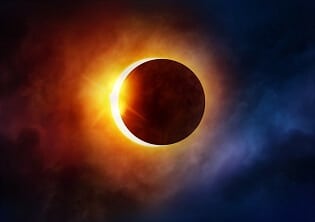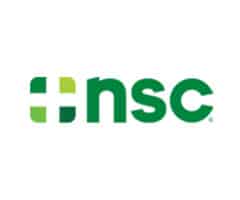A total solar eclipse visible in the United States is rare – and precious, just like your vision.

When the moon crosses in front of the sun on Monday, Aug. 21, skies will darken, stars will twinkle and millions of Americans will be treated to an astronomical show last observed in the U.S. in 1979. The only safe way to look directly at the sun is through special-purpose solar filters, according to the American Academy of Ophthalmology.
These special filters are used in eclipse glasses and hand-held solar viewers. Eclipse glasses are available for purchase at big-box stores, electronics supply outlets and online. Look for glasses that carry this certification insignia: ISO 12312-2.
“The concern over improper viewing of the sun during an eclipse is for the development of ‘eclipse blindness’ or retinal burns,” said associate professor of optometry Dr. Ralph Chou in an article published by the National Aeronautics and Space Administration.
Chou said children and young adults are most at risk as bright light and radiation from the sun can cause heating and cook the exposed tissue of the eye. The aging process can provide a natural filtering effect in older people and reduce risk of retinal damage.
Set Rules for Your Viewing Party
In Eclipse 101, NASA outlines do’s and don’ts of viewing the eclipse:
- Do not look directly at the sun
- Do not use homemade filters or ordinary sunglasses, even very dark sunglasses
- Use special-purpose solar filters, such as eclipse glasses or handheld solar viewers, to view the eclipse
- Read and follow filter instructions and supervise children
- In any stage of eclipse, do not look at the sun through a camera, telescope, binoculars or other optical device, and never use solar filters with these devices, as concentrated solar rays will damage them and can cause serious eye injury
- Inspect your solar filter before use; if it is scratched or damaged, discard the filter
- Pinhole projection is a safe way to view the sun in indirect fashion; Exploratorium provides instruction on “How to Build a Sun Viewer” and other methods of safely viewing the sun
Who Will Be Able to See the Eclipse?
Everyone in America will see at least a partial eclipse. Those living inside a 70-mile stretch known as the “path of totality” will see the total eclipse when the moon fully covers the sun.
A downloadable map produced by NASA plots the total eclipse course through 14 states, beginning in Oregon and ending in South Carolina. NASA projects the longest duration of totality will be near Carbondale, IL, where the sun will be completely covered for about 2 minutes and 40 seconds.
Times for partial and total eclipse viewing vary depending on your location. NASA’sinteractive map allows you to click on any point in the U.S. and check peak times for viewing in your area. For example, the eclipse in Carbondale will begin at 11:52 a.m. CDT, with maximum eclipse at 1:21 p.m.
NASA also provides links to general viewing parties and libraries hosting events.
How Often Do Solar (or Lunar) Eclipses Occur?
The range is from two to seven eclipses each year, according to EarthSky.
- One calendar year has a minimum of four eclipses, two solar and two lunar
- The last time there were seven eclipses in a single year was 1982, and the next time will be 2038
- Few people see the shallow solar eclipses that occur regularly in the Arctic and Antarctic regions
After Aug. 21, the next total solar eclipse will be July 2, 2019, in South America.
Check out where to view the eclipse in the Lehigh Valley.








